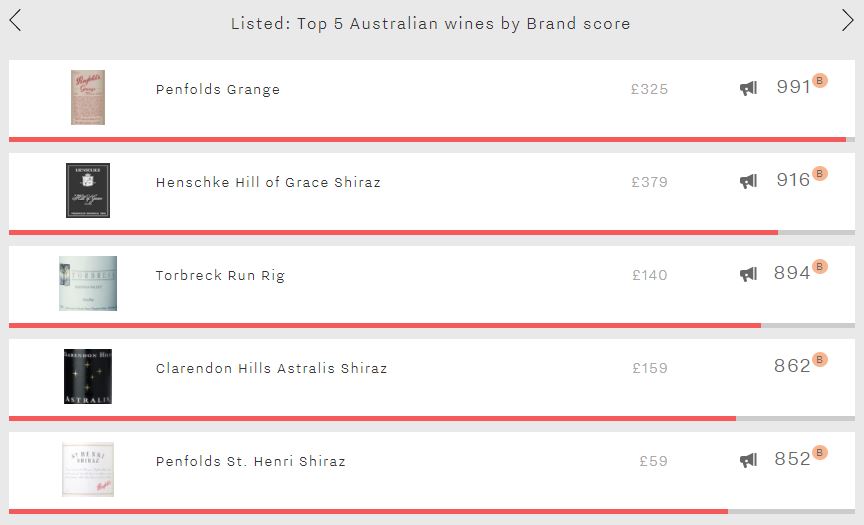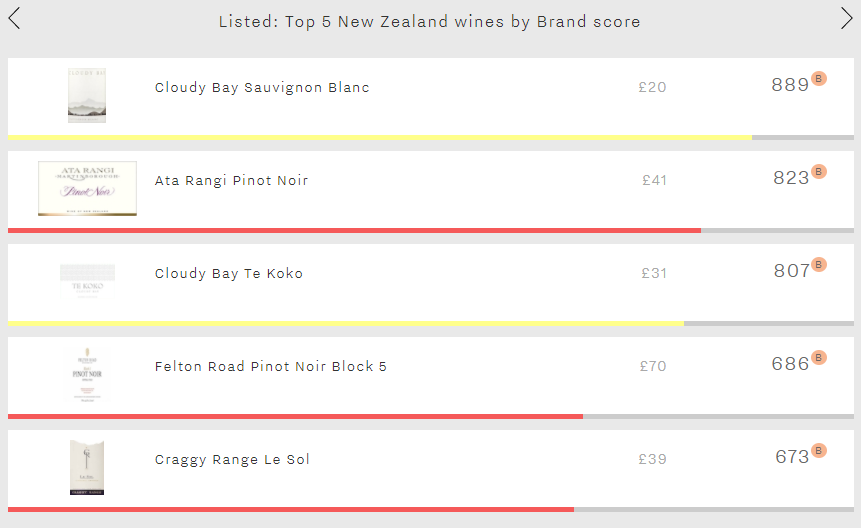Owner and winemaker of her iconic family estate in Condrieu: “A wine is like its maker”.
The 15th in Le Figaro Vin’s series finds us in the northern part of the Rhône Valley where Christine Vernay, #36, has made her distinctive mark in the 25 years since she took over from her father, Georges Vernay.

From its home in Condrieu, Domaine Georges Vernay’s 24 hectares of vines, mainly comprised of Syrah and Viognier, extend over steep, precipitous terroirs. Georges Vernay began to develop the estate in 1953, starting out with 1.5 hectares of vines classified as AOC Condrieu Coteau de Vernon. A passionate defender of the appellation, he played a major part in its preservation.
As the third-generation owner of the family property, Christine Vernay, joined in 2020 by her daughter Emma Amsellem, maintains the family’s knowledge and expertise. Today they cultivate 10 hectares of vines classified as AOC Condrieu, including three hectares of old vines which produce the prestigious Le Coteau de Vernon and Les Chaillées de l’Enfer, wines which epitomise the Viognier grape variety in Condrieu. They also grow six hectares of vines classified as Côte-Rôtie, two hectares as Saint-Joseph, and six hectares as IGP Syrah and Viognier.
Le Figaro Vin: How does it feel to be crowned a winemaking champion?
Christine Vernay: A champion? I have never thought about it in those terms. It surprises me, but I am delighted by it.
Have you been training for long?
It has been a real marathon…nearly 30 years now.
Who is your mentor?
There have been quite a few. In the first place my family, then numerous encounters in the world of wine with men and women who have inspired me.
Is wine a team sport?
Of course. How could anyone think otherwise. Wine starts its life on the vine and our hillsides require so much attention that you need a strong team to manage successfully. Everyone plays their part. When the grapes reach the cellar I have a smaller team around me, it’s more intimate, I work more on my own, and I engage in a real one-to-one conversation with my wines.
What is the key to making a good wine? The terroir or the winemaker?
Without question, the terroir. For me the terroir is a wonderful confluence of place, vine, and winemaker. You then have the freedom of interpretation to make a great wine.
To what do you owe your success?
For a winemaker the definition of success changes every year. My awareness of its transient nature stimulates and strengthens me. I believe that desire, pleasure, doubts, convictions, and, above all, commitment to inherited values are all key to progress and success.
Is your family proud of you?
I hope so!
Who is your biggest supporter?
I don’t have any.
Your favourite colour?
Red – the red of Maison Rouge.
Your favourite wine?
My heart swings between Coteau de Vernon and Maison Rouge.
Your favourite vintage?
1997, my first vintage.
If your wine was a person, who would it be?
It would be me. I often find that a wine is like its maker.
What are the best circumstances in which to taste your wine?
My favourite circumstances for tasting it are when you are tuned in to the sensations that it can bring you.
Have you ever thought about chemically enhancing yourself, or your wine?
Our reciprocal energies are enough in themselves.
For what price would you be prepared to sell your estate?
I am not prepared to sell it.
Who is your strongest competition?
Nature, which you have to contend with all the time.
Which competition do you dread the most?
At the beginning of the harvest, when you are walking through the vines, tasting the grapes, keeping a watchful eye on the earth and the sky, and deciding when to press start, you experience a powerful adrenaline rush. I dread it, but I love it.
What is your greatest trophy?
The smile and serenity of my father watching me be a winemaker.
What has been your most innovative strategy in the vineyard and in the cellar?
Commitment to a way of working that respects the environment and having the flexibility to be as close as possible to the vines, the grapes, and the wine, contingent on the demands of nature, the vintage, the weather…
Who would be your ideal successor on the podium?
My daughter!
Having stopped off last week in Syrah’s spiritual home – the Northern Rhône – in search of the region’s leading wines for the 2015 vintage, this week Wine Lister’s Listed section ventures to Australia, surely Syrah’s most famous home from home. Australian Shiraz might differ stylistically from the Northern Rhône’s finest Syrahs, but the Land Down Under’s foremost brands have certainly managed to establish themselves as a force to be reckoned with on the international fine wine market.

Penfolds’ flagship Grange is Australia’s runaway leader in the Brand category. Its formidable score of 991 is not only 75 points ahead of Australia’s second strongest brand – Henschke Hill of Grace Shiraz – but also nudges ahead of the Northern Rhône’s top brand – Jaboulet Hermitage La Chapelle. Whilst Grange can’t quite match La Chapelle in terms of the number of the world’s top restaurants in which it features (34% vs 43%), establishments in which it does appear list 1.5 times more vintages / formats on average (4.5 vs 3.0). Grange is also considerably more popular than La Chapelle, receiving nearly twice as many searches each month on Wine-Searcher. Within Australia no other wine comes close to its level of brand strength. It is visible in nearly twice as many restaurants as the group’s next-best wine in the criterion – Henschke Hill of Grace Shiraz – and is searched for almost five times more frequently than the second-most popular wine of the five – Penfolds St. Henri Shiraz. Last year’s release of g3, a blend of 2008, 2012, and (the as yet unreleased) 2014 Grange will only serve to secure Grange’s standing as Australia’s top brand. Click here to see all of Grange’s vintages. Confirming Penfolds as Australia’s most prestigious producer, the St. Henri Shiraz bookends the top five with a score of 852.
Other than Grange, the only Australian wine to enjoy a Brand score above the 900-point mark – and thus making the “strongest” band on Wine Lister’s 1,000-point scale – is Henschke Hill of Grace Shiraz (916). As previously mentioned, Eden Valley’s leading light achieves the group’s second-best level of restaurant presence. It is also the third-most popular wine of the five, receiving 4,107 searches each month on average and, notably, is by far the most expensive of the group.
The two remaining spots are filled by Torbreck Run Rig and Clarendon Hills Astralis Shiraz (894 and 862 respectively). Whilst they receive a very similar number of searches each month, Torbreck Run Rig edges ahead thanks to superior restaurant presence (17% vs 11%) – presumably in part due to producing over twice as many bottles each year as Clarendon Hills Astralis.
Mention New Zealand, and the first thing that springs to mind will most likely be rugby. The All Blacks are not just the world’s best team, but the foremost brand in rugby. In wine terms, they are the left bank first growths; the team that even people who don’t follow rugby will recognise. Whilst peerless with the oval ball, when it comes to vinous competition New Zealand can’t compete with its Old World counterparts in terms of brand strength. However, as this week’s top five shows, New Zealand’s top brands definitely shouldn’t be discounted.

Cloudy Bay fills two of the five spots with its straight Sauvignon Blanc and Te Koko Sauvignon Blanc. With a very strong score of 889 – putting it ahead of the likes of Haut-Brion Blanc – the straight Sauvignon Blanc dominates the rest of the five across both of Wine Lister’s brand criteria. It receives 56% more searches each month on Wine-Searcher than Ata Rangi Pinot Noir (the group’s second-most popular wine). Te Koko – New Zealand’s third-strongest brand (807) – displays a similar profile to the straight Sauvignon Blanc. Its brand is its strongest facet, comfortably outperforming its Quality and Economics scores (614 and 308 respectively).
Whilst Sauvignon Blanc is New Zealand’s foremost white grape, its most prestigious reds are Pinot Noirs, with Ata Rangi’s offering and Felton Road’s Block 5 both appearing in the top five. Ata Rangi is by far New Zealand’s strongest red brand (823). It is the country’s most visible red in the world’s top dining establishments (11%), and also the most popular with consumers, receiving three times as many searches each month as the Felton Road. Whilst it appears in just 7% of top restaurants, Felton Road Block 5 enjoys the group’s best vertical presence, with two vintages / formats offered on average per list. It is also the most expensive of the five. Incidentally, the two Pinot Noirs comfortably achieve the group’s best Quality scores and are the only two with scores above 800 in the category.
Proving that New Zealand isn’t all Sauvignon Blanc and Pinot Noir, Le Sol – Craggy Range’s Syrah – completes the five, with a Brand score of 673.


